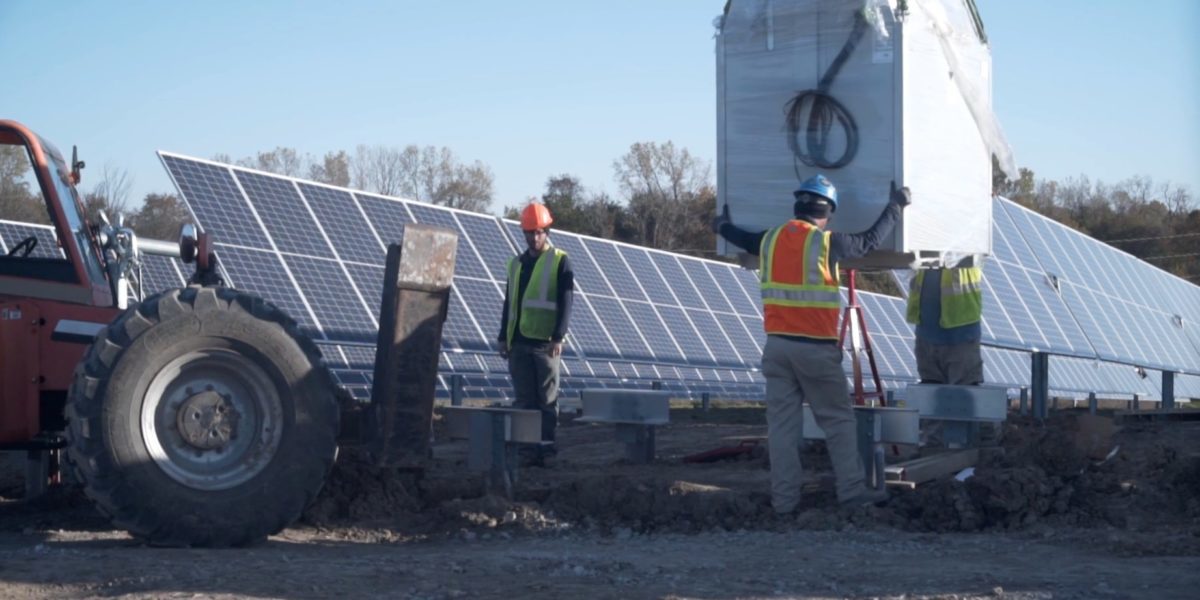In a press release yesterday, Idaho Power announced that it has signed a 20-year power purchase agreement with Jackpot Holdings for a price of $21.75/MWh. The agreement allows for Idaho Power to purchase the solar plant at a later date, as well as to obtain electricity from a proposed expansion of the facility at a later date. The electricity is described as being a replacement for a soon-to-retire coal plant in Nevada.
The utility says that it will submit the proposal to the state’s Public Utilities Commission for approval in the coming days. It is then that we will learn whether this plant includes an escalator in the pricing, much like the the Sempra Renewables 250 MW Copper Mountain Project that put in an even lower starting bid — 2.155¢/kWh.
The current publicly known lowest prices for solar PPAs are 2.375¢/kWh by 8minutenergy in Nevada and 2.49¢/kWh for a project in Arizona, as well as a project in Austin that is stated as being below 2.5¢/kWh — but without publicly releasing all the details of the contract.
Concurrent with this announcement was that Idaho Power is aiming for 100% clean electricity by 2045. The company gets more than 46% of its electricity from hydroelectric sources already, and has entered into agreements to end participation in two coal plants and is exploring exiting a third, and final, coal plant.
Six years ago, more than 40% of the utility’s electricity came from coal.
One theory for how a group in a region with a lower solar irradiation value can set a record low price versus the likes of 8minutenergy and NextEra in Nevada, was hinted at in a recent pv magazine USA interview with 8minutenergy.
The project is being installed in a location with an existing transmission line that today is delivering electricity from the aforementioned closing coal fired plant in Nevada. Additionally, it was noted that the solar power plant could be expanded in the future, with Idaho Power having an option to purchase that electricity at a higher price. This suggests transmission or substation upgrades will be necessary to expand the facility
In the interview noted above, 8minutenergy President & CEO Tom Buttgenbach said:
There is no low hanging fruit anymore. Plenty of substations had space, that’s not true today. Today you have to accept quite a bit higher costs in order to interconnect to the grid. It’s very hard to find good, and inexpensive land close to those substations.
Well, maybe Idaho Power and the hard working developers of Jackpot Holdings found that diamond in the rough. And it probably also means, with retiring coal plants across the nation — there will be significant viable electricity infrastructure interconnections that we can connect to. Meaning record low pricing might not be done in the United States just yet.
This content is protected by copyright and may not be reused. If you want to cooperate with us and would like to reuse some of our content, please contact: editors@pv-magazine.com.



Rooftops may be cheaper than land!
If you can provide 0 dollar or more pricey, roof made of solar panels, sell part of production to building owners.
Would be great to see even lower price on electricity by taking advantage of roofs needing a change.
There are photographs of installations in Europe, where they work very hard to conserve farmland, of solar panels on poles. They are similar to tall fences. They are spaced one combine width apart which permits regular crops to be planted between them. The panels are the two-sided type. I do not read this website on a regular basis, perhaps you have had articles on this previously, but it sure does make sense for states like Illinois which had 800 proposals for solar installs on farmland.